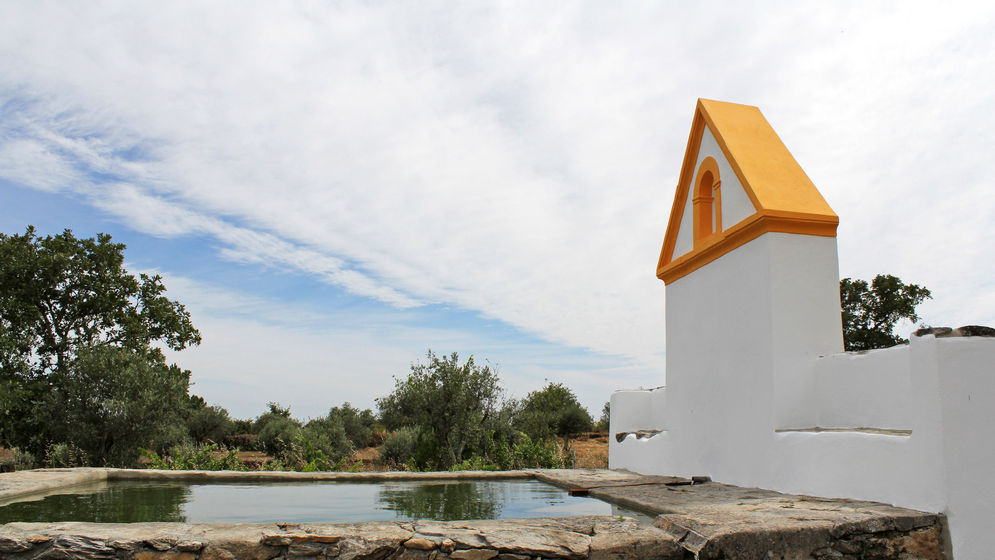The Atmosphere
The vineyard
We have around 3,300 grapevines that are over 100 years old and several thousand grapevines newly planted after 2010. These are the offspring of the old grapevines; they use the same gcadmin stock, the same plant material and some of these were planted in the area of the old grapevines to fill in the gaps.
Back to the old world of Alentejo grape varieties and wine. Restoring the traditional farming system.
The unwired grapevines are trained using the bush vine system. They have a large number of varieties, all mixed together, and grow alongside the olive groves and fruit trees, just like all the old vineyards in this beautiful region, an invitation to stroll around and pick some fruit or just enjoy the fabulous scenery.
The vegetable gardens and animals
The estate has one big space served by water tanks for watering during the dry seasons. These are our “food gardens”. They provide agritourism with all of the vegetables needed and give guests the opportunity to learn about the plants, which they sometimes don’t know, and to gather the produce to eat later or to take back home with them.
Sheep and hens are the animals that help us in our farming, controlling the spontaneous vegetation and fertilising the land. They also sporadically provide us with high quality organic meat and fresh eggs.
The Water Fountains
These are a landmark of this National Park. There are hundreds of them all around the 31,750 hectares of the total area. On our estate, 4 water fountains collect the water from the springs and runs in Roman tile pipes at the bottom of the contra minas (underground rock tunnels) painstakingly carved out by the “ancients”. The murmuring water is with us all year round. These springs have never run out, not even in times of drought. It’s good to hear the sound of running water, shaded from the Alentejo sun.
The Region
The Serra de São Mamede National Park
This National Park, 40 km long and 10 km wide, is the most populated in the country. It has a population of around 30,000 in various communities. “Urbanised countryside” par excellence.
It has a wide variety of landscapes and flora: cork oak groves growing alongside olive groves, oak groves with pastureland, vegetable gardens in the cooler areas, all kinds of fruit trees, from citrus trees to cherry trees and… lots of grapevines. A landscape collage of all of inland Portugal.
A calm, relaxing environment, a Mediterranean/continental climate, complex geology, with several soil types (granite, schist and limestone) and plenty of water. An evergreen island in the heart of the dry Alentejo.





